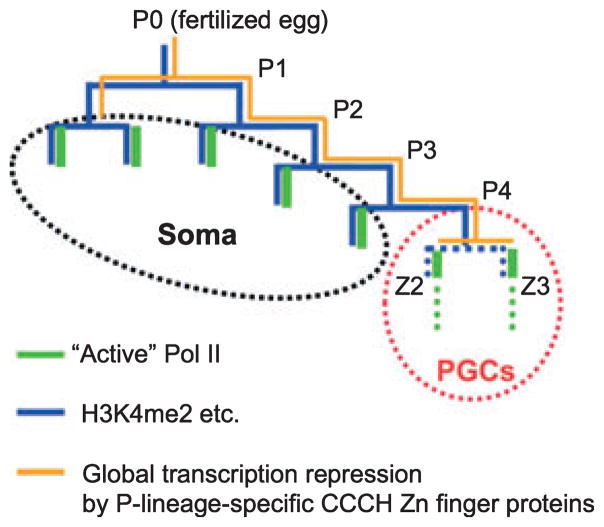Fig. 2.
Transcription status and histone modification dynamics in C. elegans early embryonic blastomeres. During early embryogenesis, the asymmetric divisions of P-lineage cells (P0 to P3) produces germ line precursors and somatic cells. Subsequently, the last P cell (P4) finally makes two germline-committed cells, Z2 and Z3, and they are arrested at G2 phase during the rest of embryogenesis (Fukuyama et al. 2006). Throughout P-lineage, CCCH zinc finger proteins, OMA-1/2 and PIE-1, are sequentially acting to maintain transcriptional quiescence independently of the chromatin environment (orange line: Seydoux et al. 1996; Seydoux and Dunn, 1997; Guven-Ozkan et al. 2008). However, soon after the symmetric cell division of P4, PIE-1 is degraded quickly and “Active Pol II” suddenly appears in the PGCs (green). H3K4me2 (blue) are initially present in both the transcriptionally quiescent P-lineage and their somatic sisters where transcription is activated. H3K4me2 in P-lineage is maintained by unidentified mechanism, but in the PGCs the level of H3K4me2 begin to decrease (indicated by dotted blue lines), and becomes almost undetectable soon after the birth of Z2/Z3 (Schaner et al. 2003). Our recent study revealed that the appearance of “active Pol II” in the PGCs is actually transient, and that MES-4 activity is important for the Pol II repression (indicated by dotted green lines) (Furuhashi et al. unpubl. data, 2009).

